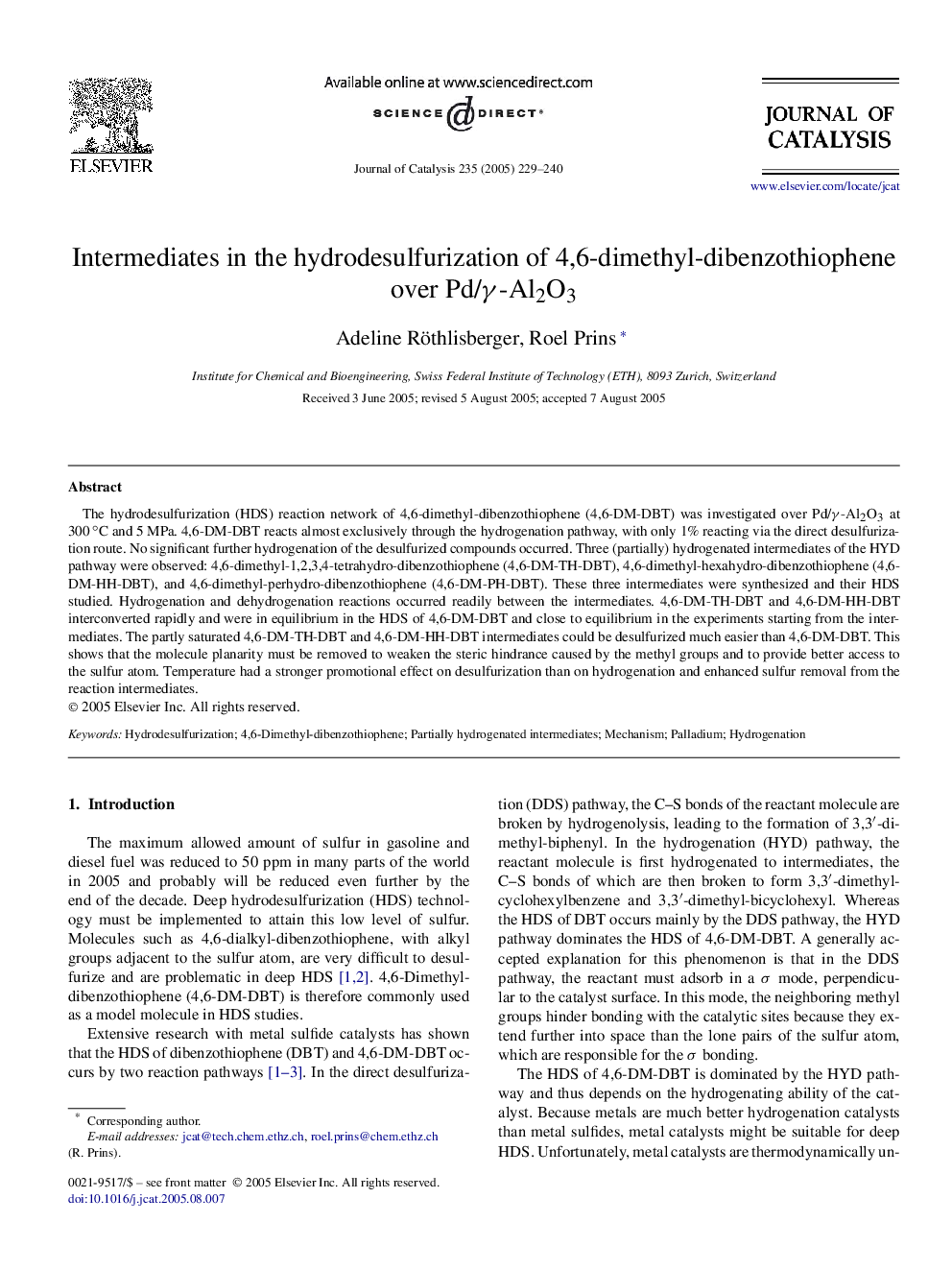| Article ID | Journal | Published Year | Pages | File Type |
|---|---|---|---|---|
| 10244571 | Journal of Catalysis | 2005 | 12 Pages |
Abstract
The hydrodesulfurization (HDS) reaction network of 4,6-dimethyl-dibenzothiophene (4,6-DM-DBT) was investigated over Pd/γ-Al2O3 at 300â°C and 5 MPa. 4,6-DM-DBT reacts almost exclusively through the hydrogenation pathway, with only 1% reacting via the direct desulfurization route. No significant further hydrogenation of the desulfurized compounds occurred. Three (partially) hydrogenated intermediates of the HYD pathway were observed: 4,6-dimethyl-1,2,3,4-tetrahydro-dibenzothiophene (4,6-DM-TH-DBT), 4,6-dimethyl-hexahydro-dibenzothiophene (4,6-DM-HH-DBT), and 4,6-dimethyl-perhydro-dibenzothiophene (4,6-DM-PH-DBT). These three intermediates were synthesized and their HDS studied. Hydrogenation and dehydrogenation reactions occurred readily between the intermediates. 4,6-DM-TH-DBT and 4,6-DM-HH-DBT interconverted rapidly and were in equilibrium in the HDS of 4,6-DM-DBT and close to equilibrium in the experiments starting from the intermediates. The partly saturated 4,6-DM-TH-DBT and 4,6-DM-HH-DBT intermediates could be desulfurized much easier than 4,6-DM-DBT. This shows that the molecule planarity must be removed to weaken the steric hindrance caused by the methyl groups and to provide better access to the sulfur atom. Temperature had a stronger promotional effect on desulfurization than on hydrogenation and enhanced sulfur removal from the reaction intermediates.
Related Topics
Physical Sciences and Engineering
Chemical Engineering
Catalysis
Authors
Adeline Röthlisberger, Roel Prins,
